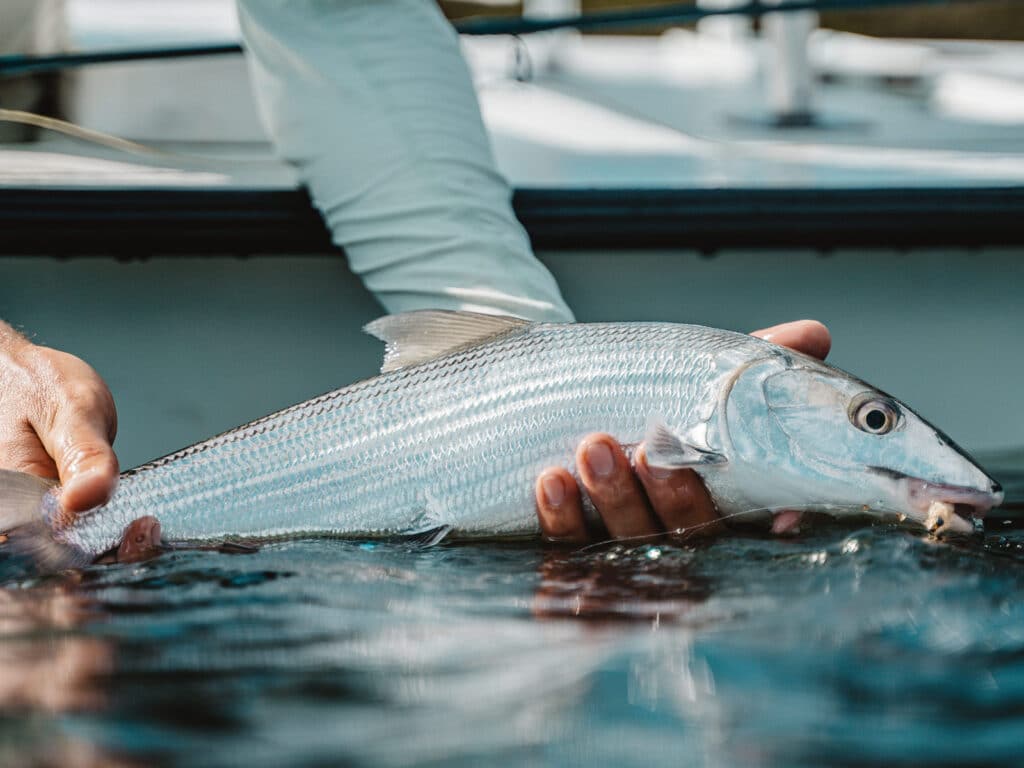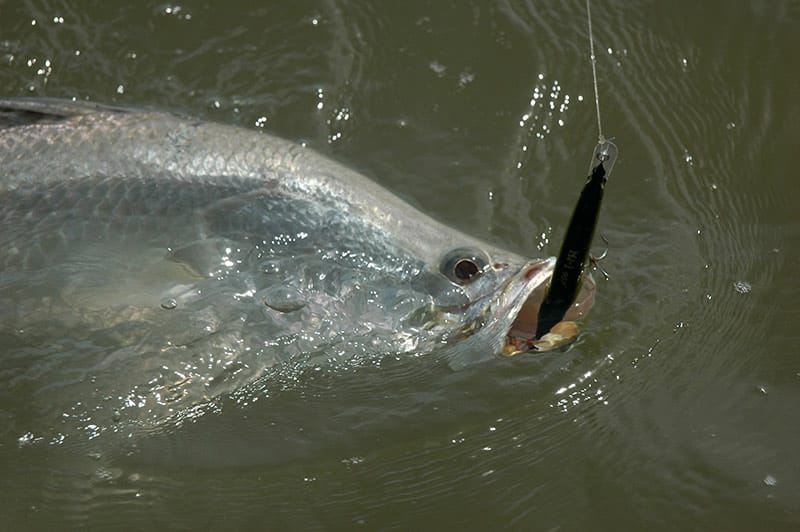
Mechanical lip-gripping devices are popular among anglers as a means to avoid sharp teeth, weigh fish, and hold fish for photos. While lip-grippers can reduce handling, which can remove a fish’s protective slime, research shows that they often do more harm than good, especially when fish are held vertically.
How Lip-Grippers Injure Fish

A 2007 study at the Cape Eleuthera Institute in the Bahamas assessed the effects of a lip-gripping device on bonefish. Ten fish were held vertically in the air for 30 seconds, and 10 fish were held horizontally in water for the same amount of time. The results were undeniable.
The research article published in the scientific journal Fisheries Research stated, “the lip-gripping device caused mouth injuries to 80% of bonefish restrained in the water and 100% of bonefish held in the air, always when fish thrashed while being held. Some of the injuries were severe (40%) and included separating the tongue from the floor of the mouth, creating tears and holes in the soft tissue of the lower jaw, and splitting the mandible.”
In the study’s control group of bonefish, which were held only with bare hands, only one fish showed signs of injury, which was minor inflammation inside the lower jaw, likely from the hook.
According to the study’s lead author, Dr. Andy Danylchuk, Professor of Fish Conservation at the University of Massachusetts Amherst and a Bonefish & Tarpon Trust (BTT) Research Fellow, these types of injuries could impact a bonefish’s ability to feed. “It’s easy to visualize how severe injuries to the mouth can impact handling prey, like crabs and shrimp, not to mention force bonefish to channel energy to heal wounds and fight infection,” said Danylchuk. “Although we didn’t document any short-term mortality (less than 48 hours), if we care about the future of bonefish, anglers shouldn’t use a lip-gripping device when handling them.”
Hold Fish Horizontally Not Vertically

Another study was conducted in 2008 on barramundi, a prized gamefish native to northern Australia that anatomically resembles a snook and can jump like a tarpon.
Australian researchers held 21 barramundi of varying size above the water for 20 seconds with lip-grippers, 10 vertically and 11 horizontally with a hand supporting them. The results resembled the bonefish study’s findings. According to the research article in the scientific journal North American Journal of Fisheries Management, “All fish held with lip grippers and receiving no additional support had small holes in the membranes of the lower jaw, compared with 81 percent of fish that were held with lip grippers and supported by a hand.”
The researchers concluded that the holes in the lower jaw membrane could impede the ability of barramundi to feed, since the holes could “reduce the effectiveness of the sucking action” the fish use to capture prey. Additionally, the study found that lip-grippers can cause internal injuries: “X-rays showed that lifting fish with lip grippers altered the alignment of the vertebrae, which did not return to normal after 3 weeks.”
How to Handle a Fish for Release

“The best way to release a fish is to limit how much you touch it, limit the time the fish is out of the water, keep your fingers away from its gills, don’t hold the fish vertically, and use barbless hooks,” said Dr. Ross Boucek, BTT’s Florida Keys Initiative Manager. To promote bonefish catch-and-release best practices, BTT launched the Save the Slime campaign last year. The guidelines, such as limiting the fish’s exposure to air and handling it without sun-gloves, apply to numerous other species, both fresh and saltwater.
If you want a photo of your trophy catch, do the fish a favor and refrain from holding it vertically in the air with a lip-gripper. Instead, Boucek advises keeping the fish partially submerged in the water, or holding it horizontally above the water with wet hands for no more than 10 seconds.
And if you need to know the weight of your catch, measure the fish’s length and girth while it’s in the water rather than weighing it with a lip-gripping spring-scale. With those two measurements, you can determine the weight of your catch by using one of the species-specific weight calculators widely available online, including for bonefish and tarpon.
Taking steps to minimize our impact on the sport fish we catch benefits not only the individual fish we land but the recreational fishery as a whole. So next time you’re on the water, use the tips and techniques mentioned here to help ensure a healthy release for your trophy catch.








